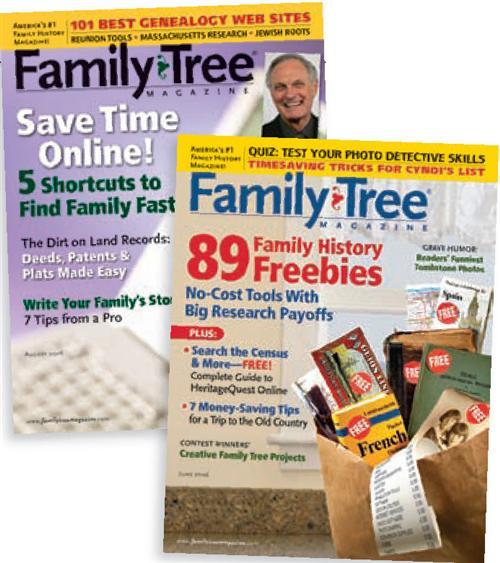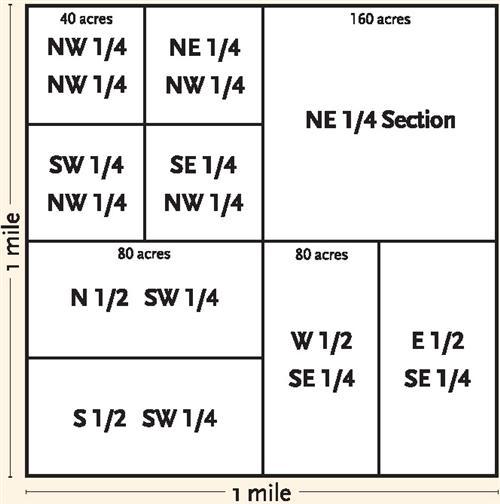Sign up for the Family Tree Newsletter Plus, you’ll receive our 10 Essential Genealogy Research Forms PDF as a special thank you!
Get Your Free Genealogy Forms
"*" indicates required fields
‘Hebrew’ Rebuke
The article “Hebrew Heritage” (August 2006) is the worst description of Jewish genealogy I have seen to date. It has an incredible number of errors, and a demeaning tone toward Jews pervades portions of the article.
Using Yiddishisms that stereotype Jews — such as ay vey and shpiel — is improper. We would not expect an author writing about African-American genealogy to refer to the “brothers in the ‘hood’ as a source of information. I counted no less than 21 errors, including three on one page alone:
• “American Jews know that the best way to tell if someone is Jewish is to ask for his last name.” This is not only absurd, but stereotypes Jews as all having names such as Goldberg, Silverstein, Baum and Rosenbaum.
• “The Austro-Hungarian, Prussian and Russian empires passed laws requiring Jews to adopt surnames in the countries’ native tongues.” The governments merely required that Jews acquire hereditary surnames. Many adopted surnames derived from Yiddish; for example, Schneider, which means “tailor.” Others are derived from town names.
• “Changes in Eastern Europe make it difficult to locate ancestral towns and figure out which archives hold records of your family.” With a few exceptions, it isn’t hard to figure out — archives don’t move. If the boundaries change, the archives become part of the new political entity. The Lemberg (Austria-Hungary) archives became the Lwów (Poland) archive after World War I, then the L’vov (USSR) archive after World War II. Today it’s the L’viv (Ukraine) archive.
Bound for Success
I enjoyed Sharon DeBartolo Carmack’s article “Homeward Bound” in the June 2006 issue. When I came to the lines “you might even be able to pinpoint your ancestor’s home site, and with luck, the house might still be standing,” I had to write.
I arranged a trip through Scottish Ancestral Trail <www.scottish-ancestral-trail. co.uk> in Scotland this past April. With paternal ancestors from the Highlands and maternal family from southwestern Scotland, I found putting together a workable journey challenging — but Scottish Ancestral Trail’s Lesley and Peter Gray managed to accomplish that and then some. Not only was I able to see the home my great-greatgrandfather was born in and left around 1830 for the United States, but the Grays also got the house key from the absent landlord — so I literally was able to walk in my ancestor’s footsteps.
The Grays had painstakingly planned every day so I could visit farms, cemeteries and churches where relatives had been christened, married, lived, worked and died. In the south, where my forefathers had been blacksmiths, I had coffee with the current blacksmith’s wife and learned some history of the village. Since I didn’t want to tackle driving in the United Kingdom, Scottish Ancestral Trail furnished a personable, knowledgeable driver, which enabled me to see all the beautiful landscape. I never would have been able to find these small villages, farms and churches on my own.
I would strongly recommend adding Scottish Ancestral Trail to your list of firms to plan genealogical journeys. They truly gave me a trip of a lifetime.
Reading your article “Homeward Bound” (June 2006) gave me an idea: I was going to my grandparents’ village — Cupra Montana in Italy’s Marche region — in May, and had planned to take a copy of the book I’d just put together on my family tree. I decided to take an extra copy to donate to the library. When I told my cousin Sergio Fiorentini of my intention, he said he knew the librarian, Riccardo Ceccarelli, very well and would deliver it to him. Mr. Ceccarelli thought it was absolutely wonderful of me to give back to Cupra Montana the history of one of its families, and asked Sergio if he could meet me.
Crash Landing
I enjoy reading your magazine. It’s very informative. But I found an error in the article “Good Deeds” (August 2006). On page 63, the diagram incorrectly identifies the east half of the southeast section (E½ SE ¼) as E ½ NW ¼. In my former line of work, I plotted many properties using the rectangular survey method. Some families are fortunate to have the survey map or final patent document for an ancestor’s plot. Knowing how to find the specific property is much simpler when you know you must begin reading and plotting the legal description backward. Perhaps the article should have mentioned this approach.
Mr. Ceccarelli was so happy to show me he had placed the official library stamp on the book’s cover and initialed it. He then showed me a copy of a book he compiled on the history of Cupra Montana and when I asked to buy it, he said that wasn’t possible — he was giving it to me. Even though it’s all in Italian, the old pictures of the village are worth their weight in gold. Then he took my son Don and me to lunch and presented me with a plaque. Just thought this story might be of interest.
Picture Perfect
I’m a new subscriber to Family Tree Magazine. My first issue, June 2006, and the 2006 Genealogy Guidebook special issue have already paid for the subscription many times over. My paternal ancestors have always been a big mystery to me. I knew my great-grandparents had emigrated from Germany in 1882 and were naturalized in 1887, but I’d had no success finding their whereabouts prior to settling in my hometown in 1905.
One of my Dad’s cousins recently shared some old family photos, and I searched them for clues to other residences. Using some of your links to online census records and city directories provided in the articles “That’s So Last Century” (June 2006) and “Photo Fortune” (2006 Genealogy Guidebook), I later researched the photos and traced the family back to 1889. The 1900 census enumerator had used an unusual surname variant, and without the photos’ information, I would never have found those ancestors.
I discovered that earlier photos of my great-grandparents were taken in Berlin, and a half-dozen “new-to-me” great-aunts and -uncles were photographed in other parts of Germany. Because of Family Tree Magazine, I’m now hopeful about finding my great grandparents’ naturalization records and ultimately their roots in Germany. I can’t thank you enough.
Corrections:
• Paul Revere’s famous horseback ride occurred April 18, 1775, not 1776, as stated in the August 2006 Massachusetts State Research Guide.
• The April 2006 article “Financial Aid” mistakenly referred to Alturas County, Idaho, as Aduras County.
From the December 2006 issue of Family Tree Magazine.
ADVERTISEMENT



